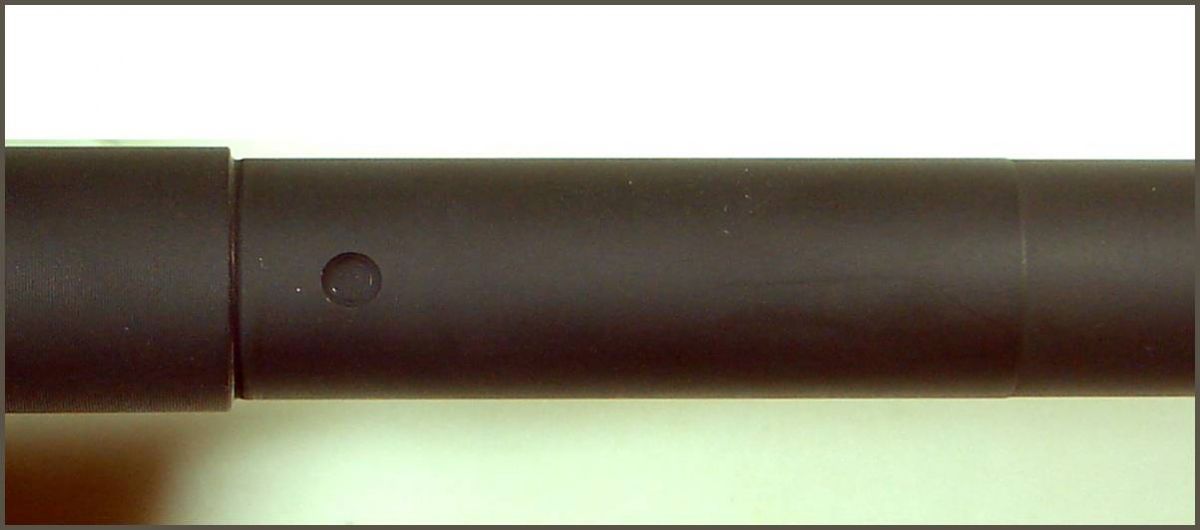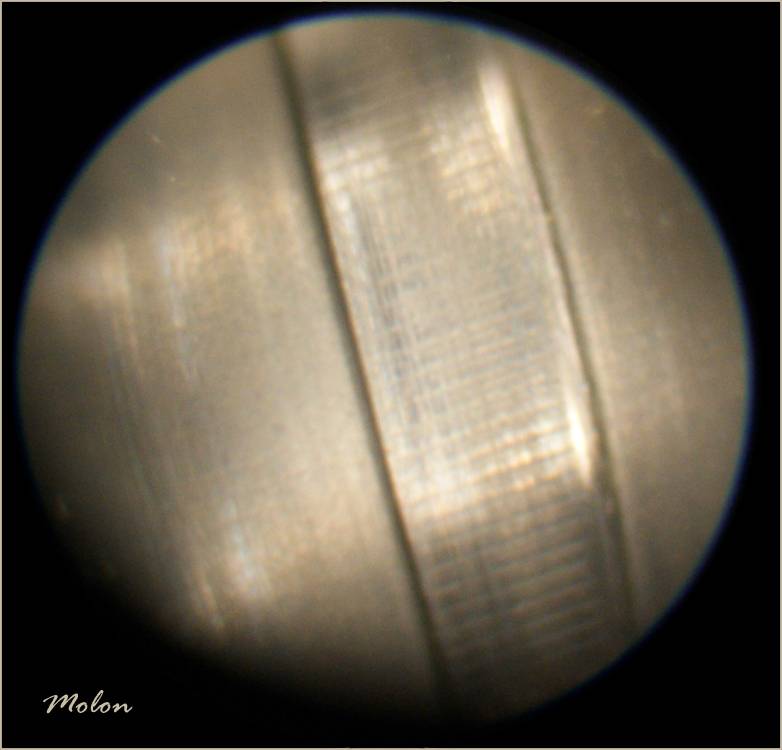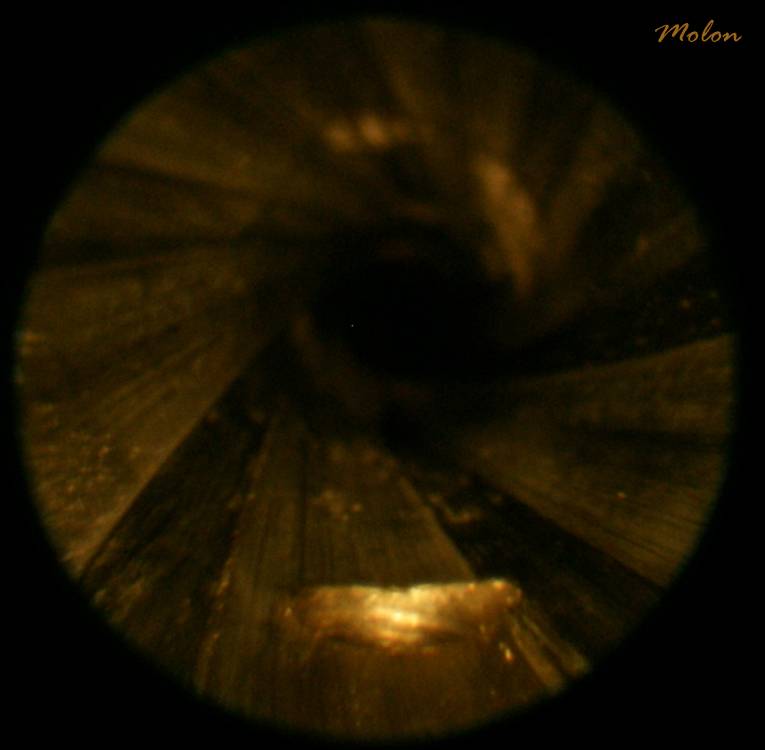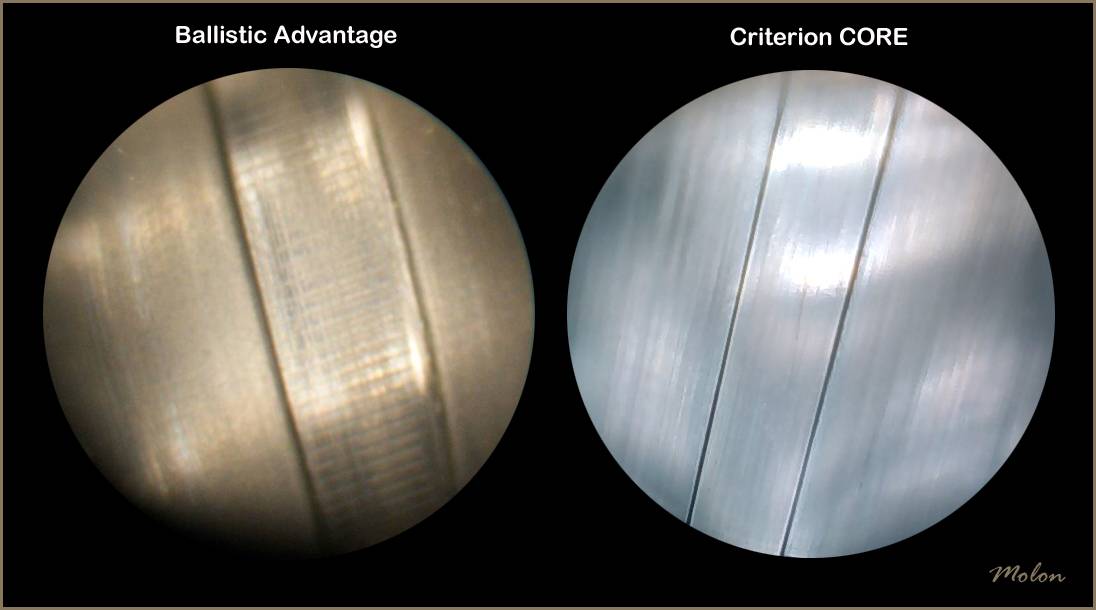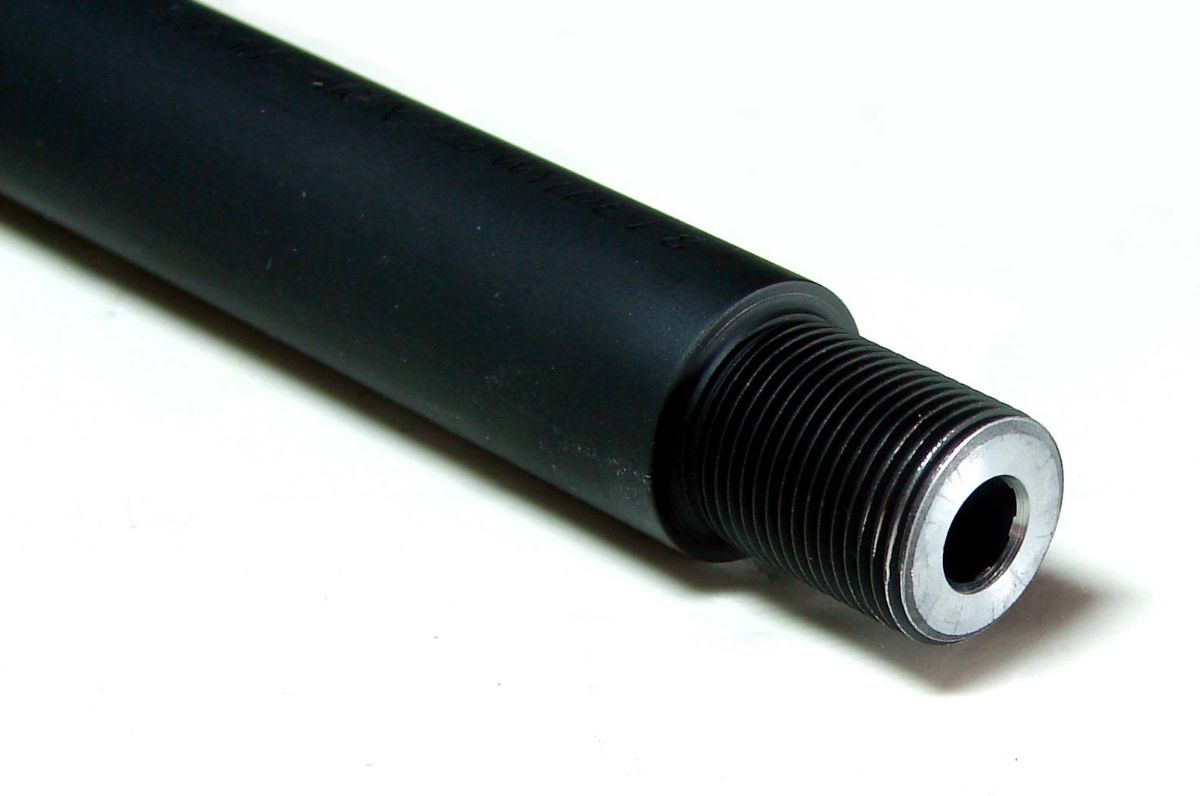Criterion 16” CORE Barrel Accuracy Evaluation
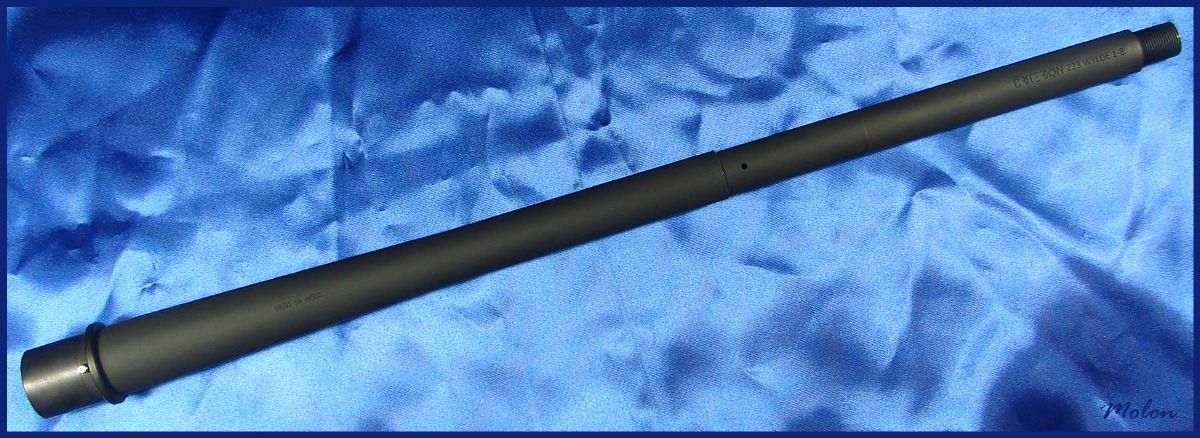
Well over a decade ago, the late John Noveske was the impetus for bringing modern AR-15 barrel profiles to the civilian market. His 16" CHF N4 barrel profile has the same weight as a government profile barrel of the same length, but it has a more intelligently designed contour that places more of the weight of the barrel from the chamber to the gas block journal and does away with the M203 cut-outs.

Over the last several years we’ve seen the emergence of barrels produced by multiple manufacturers with the specific objectives of balancing weight distribution, heat absorption and handling characteristics while at the same time endeavoring to improve upon the accuracy/precision of old school barrel profiles of similar weight. Criterion Barrels CORE series of barrels is a prime example of this modern approach to profiles for AR-15 barrels.
The Criterion 16” CORE barrel reviewed for this article has a stripped weight of exactly 1 pound, 12.0 ounces. This is the same weight as a Colt 16” government profile barrel. As with the Noveske CHF N4 barrel, the CORE barrel profile has done away with the useless M203 cutouts. More of the barrel material has been shifted to the aft of the barrel for a “continuous taper” profile. The gas block journal for the CORE barrel is 0.625”.
The 16” CORE barrel . . .

The barrel stamp reads: CRITERION 223 WYLDE 1-8
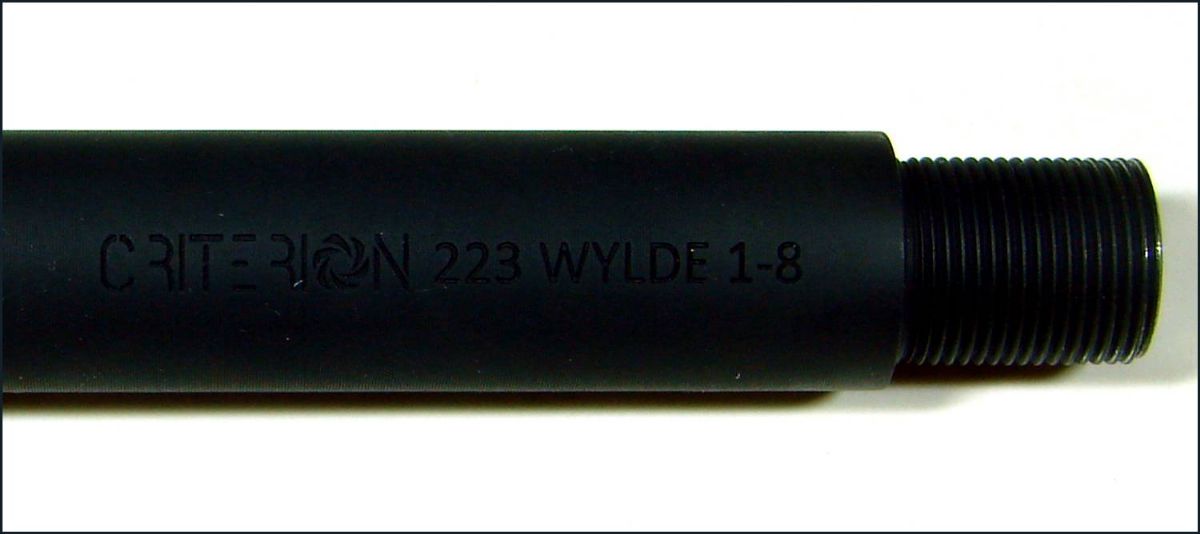
The date code on this barrel reads: 08/21.
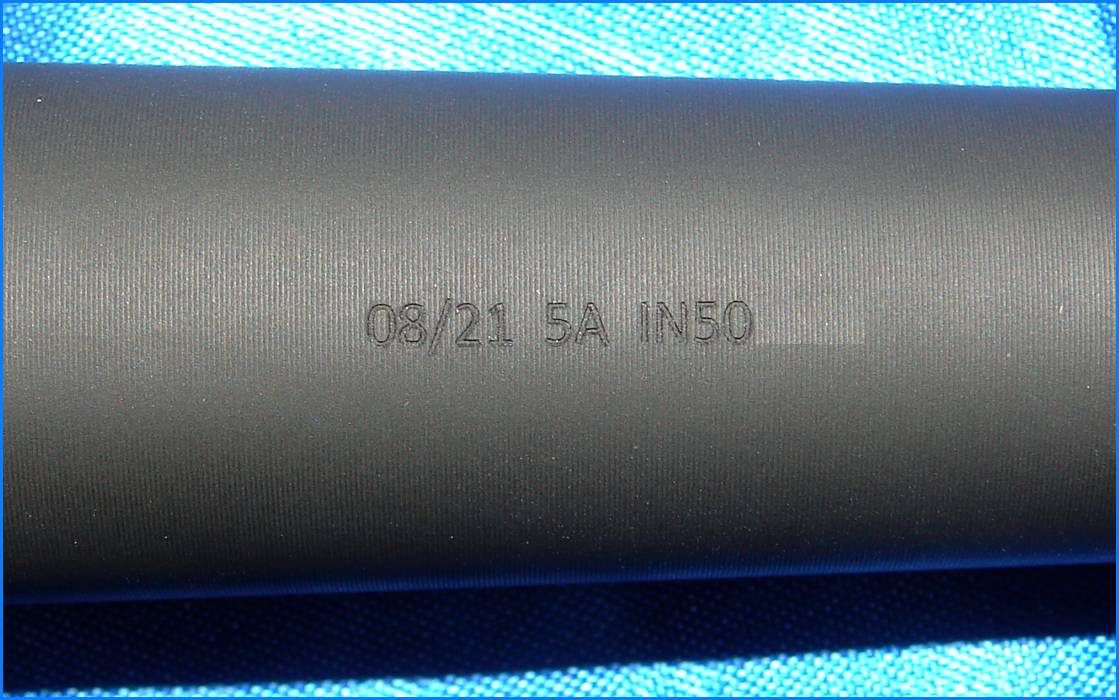
The CORE barrel is button-rifled and the bore is hand-lapped. The bore and chamber are chrome-lined. As pictured above, the barrel has a 223 Wylde chamber, a 1:8” twist and utilizes a mid-length gas system. The gas port diameter gauged at 0.078”.
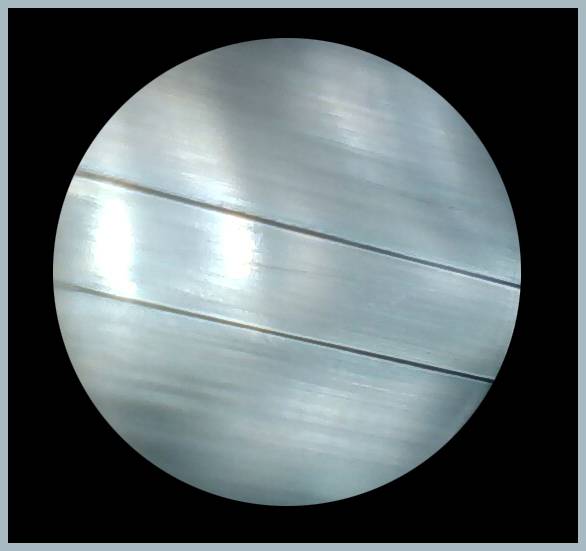
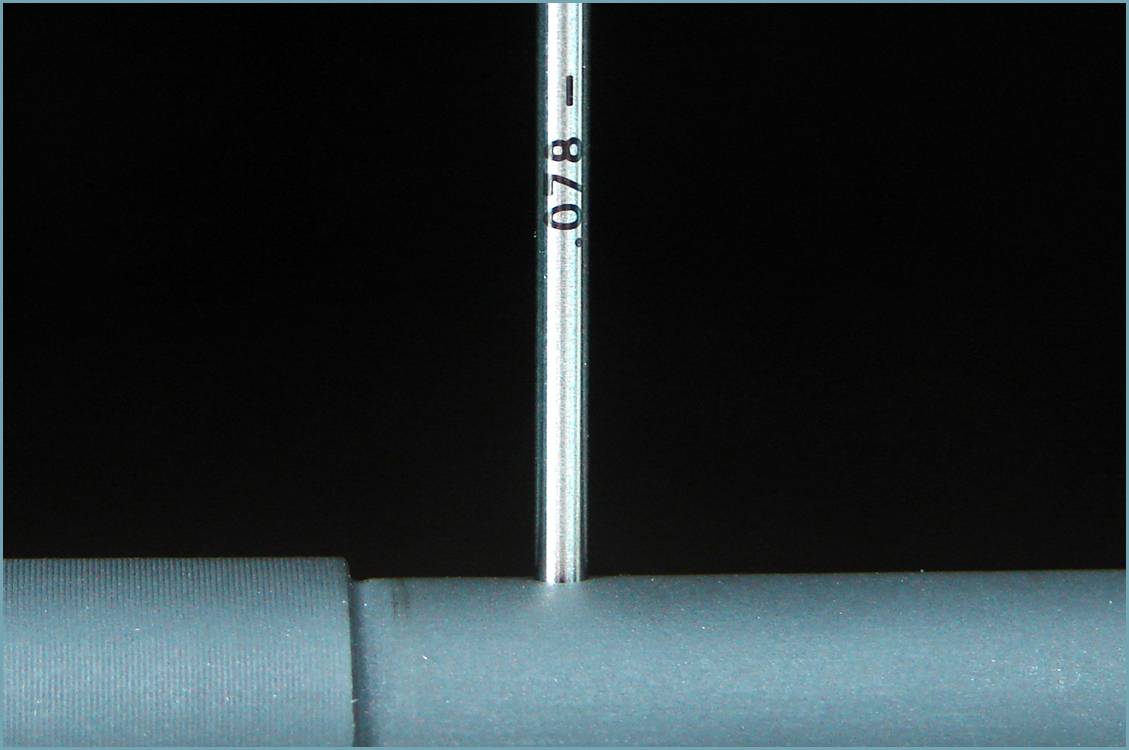
The gas block journal has a single dimple contralateral to the gas port.
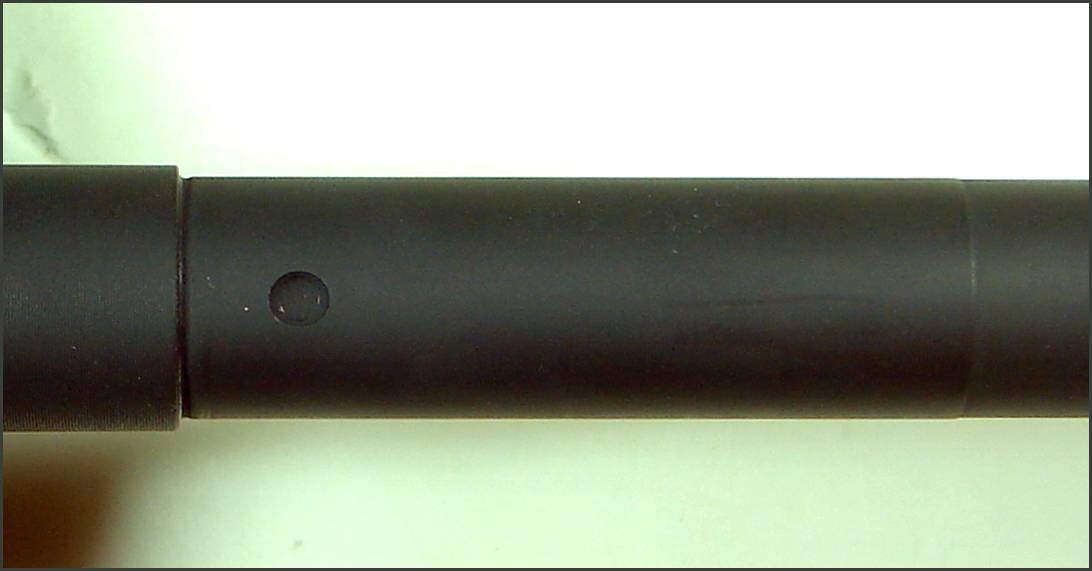
The barrel extension has M4 feed-ramps, although it is not marked as such like a Colt barrel extension.
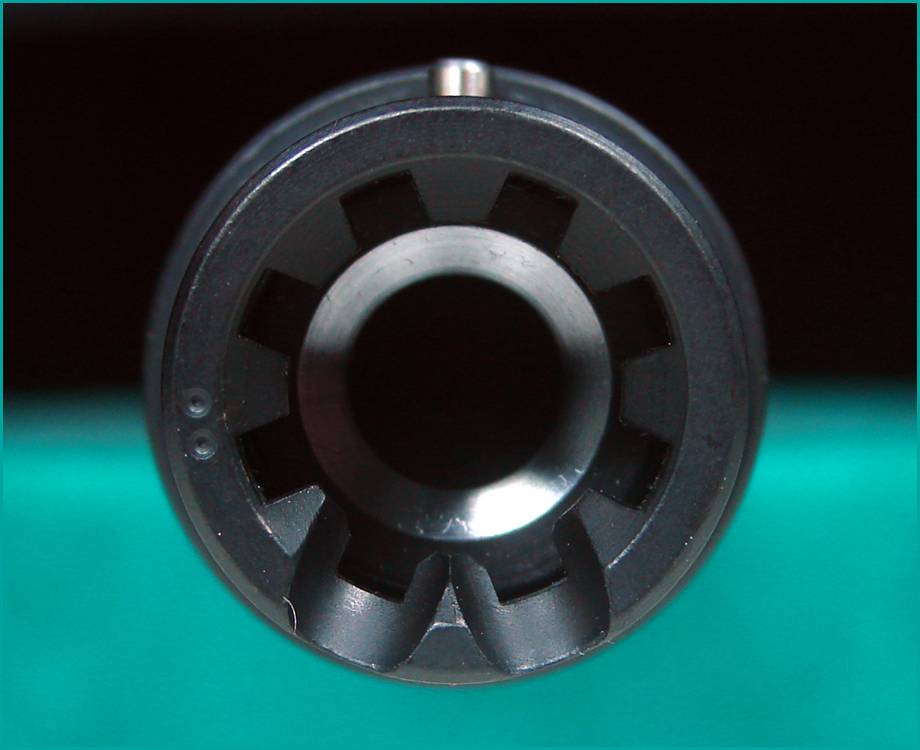
The crown . . .
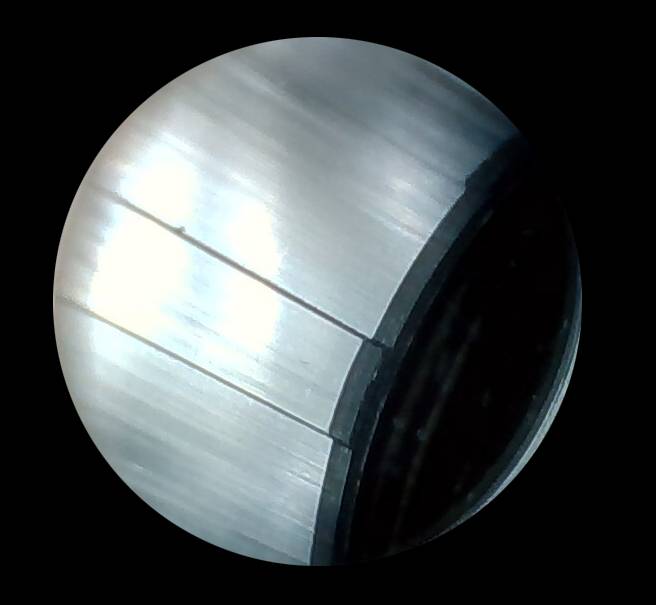
I installed the Criterion 16” CORE barrel in a new Colt cage-code M4 upper receiver and free-floated the barrel with a Geissele MK16 rail. A new JP Enterprises EnhancedBolt closed on a 1.4646” headspace gauge and did not close on a 1.4666” headspace gauge.


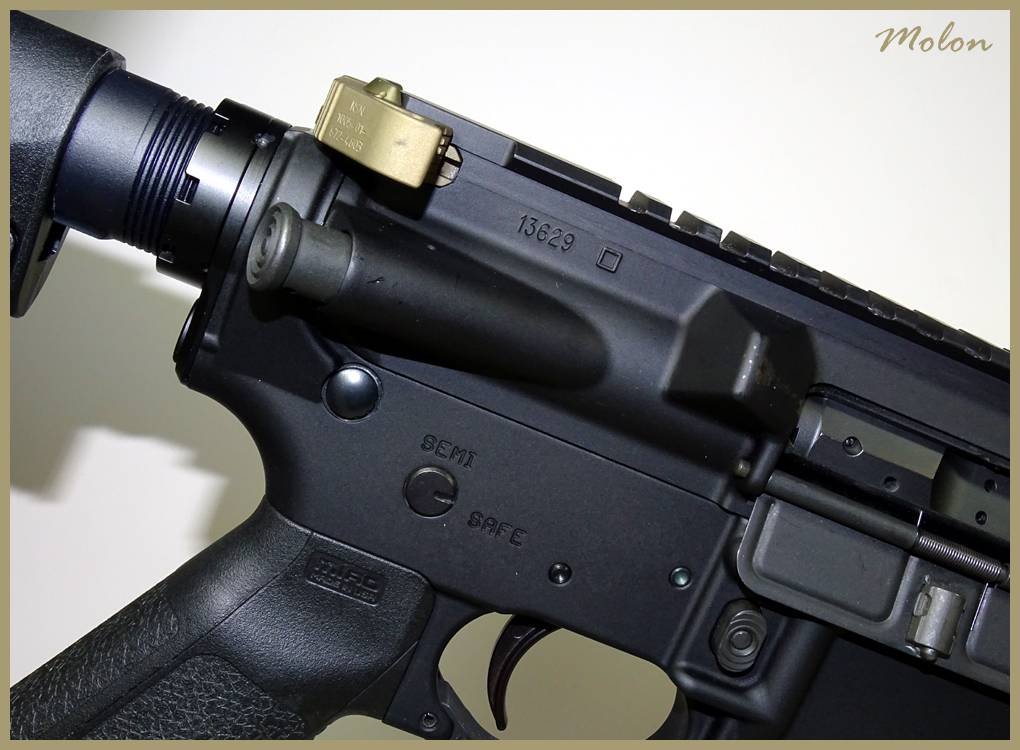
I conducted an accuracy (technically, precision) evaluation of the Criterion 16” CORE barrel from my bench-rest set-up following my usual protocol. This accuracy evaluation used statistically significant shot-group sizes and every single shot in a fired group was included in the measurements. There was absolutely no use of any group reduction techniques (e.g. fliers, target movement, Butterfly Shots).
The shooting set-up will be described in detail below. As many of the significant variables as was practicable were controlled for. Pictures of shot-groups are posted for documentation.
All shooting was conducted from a concrete bench-rest from a distance of 100 yards (confirmed with a laser rangefinder.) The free-float hand-guard of the rifle rested in a Sinclair Windage Benchrest, while the stock of the rifle rested in a Protektor bunny-ear rear bag. Sighting was accomplished via a Leupold VARI-X III set at 25X magnification and adjusted to be parallax-free at 100 yards. A mirage shade was used. Wind conditions on the shooting range were continuously monitored using a Wind Probe. The set-up was very similar to that pictured below.
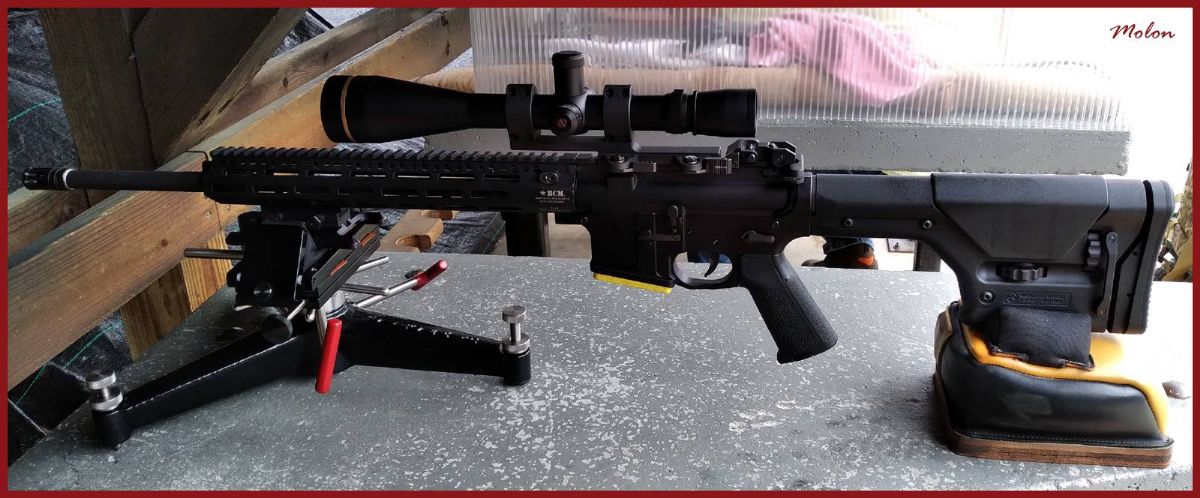
The Wind Probe . . .
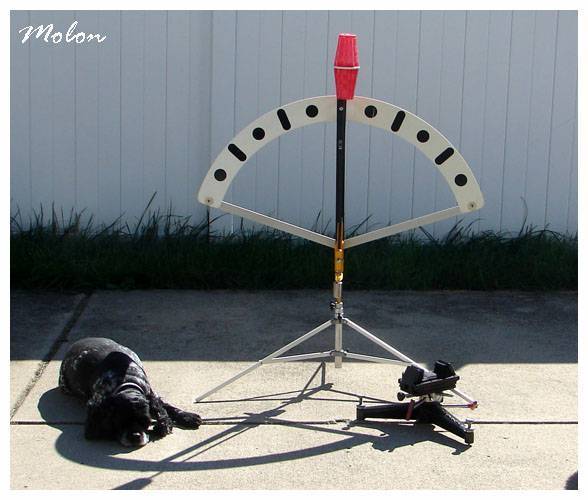
The accuracy evaluation of this barrel began with factory loaded Federal 77 grain Gold Medal Match ammunition. One of the first groups fired from this barrel had an extreme spread of 0.18”. That group is pictured below.
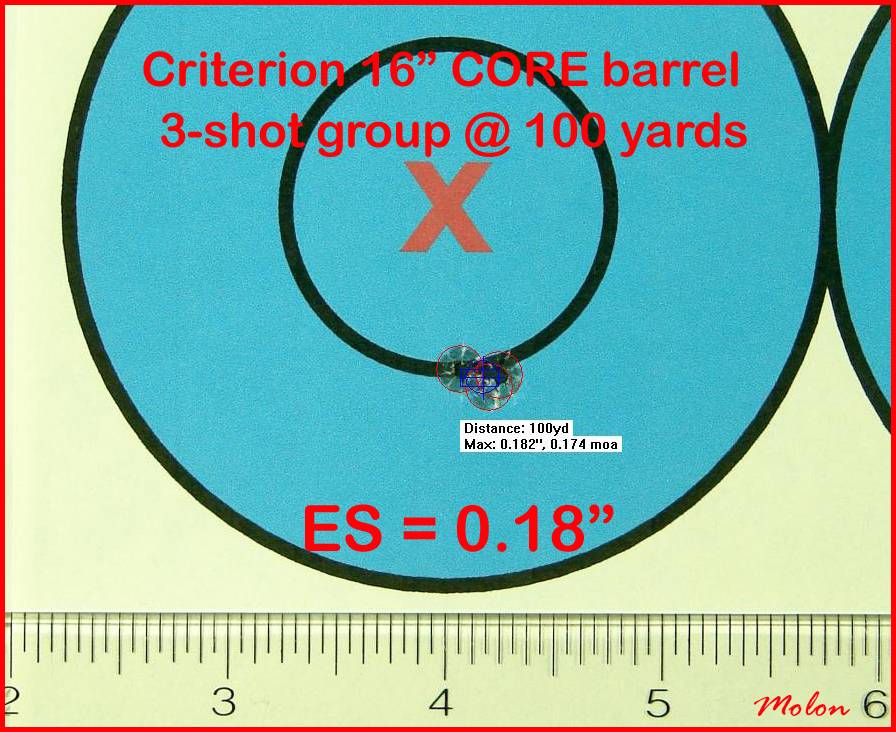
The very next group fired from this barrel had an extreme spread of 1.5”. That 10-shot group is pictured below.
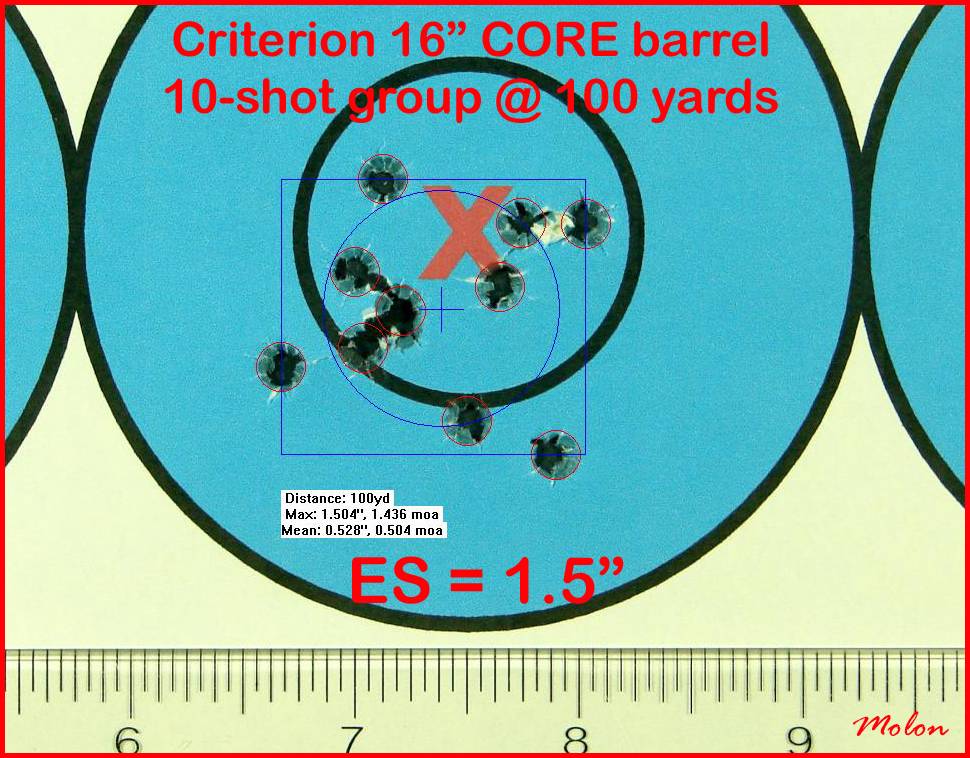
A 10-shot group with an extreme spread of 1.5” is perfectly acceptable for a 16” chrome-lined AR-15 barrel with a weight of 1 pound, 12 ounces. However, this barrel isn’t broken-in yet. The bore-scope image shown below was taken prior to any shots being fired. It shows the tooling marks on the lands in the leade, which run perpendicular to the direction of bullet travel.

For the barrel to shoot to it’s potential, the sharp edges of these tool marks need to be “burnished” out. So, I continued shooting 10-shot groups using a variety of factory loads and hand-loads.
For comparison, the bore scope view shown below is from the leade of a Colt M4A1 SOCOM barrel that's been fully broken-in.
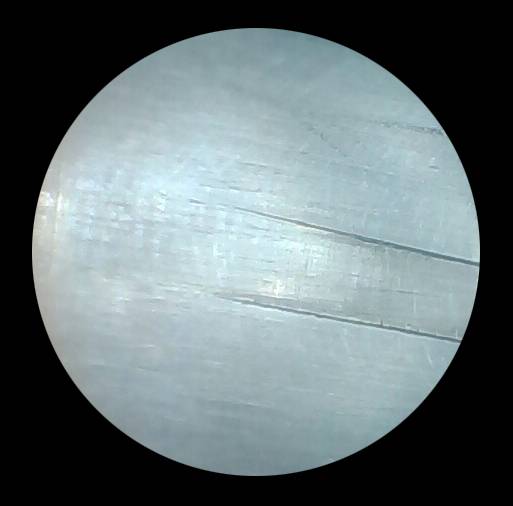
As the fired round-count for the CORE barrel approached 150, the size of the groups shrank and became more consistent. At this point, I fired the three 10-shot groups “of record” using one of my standard match-grade hand-loads topped with Sierra 55 grain BlitzKings. When fired from my Krieger barreled AR-15s, this load has produced ½ MOA 10-shot groups at 100 yards.
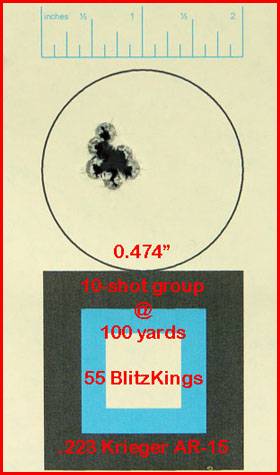
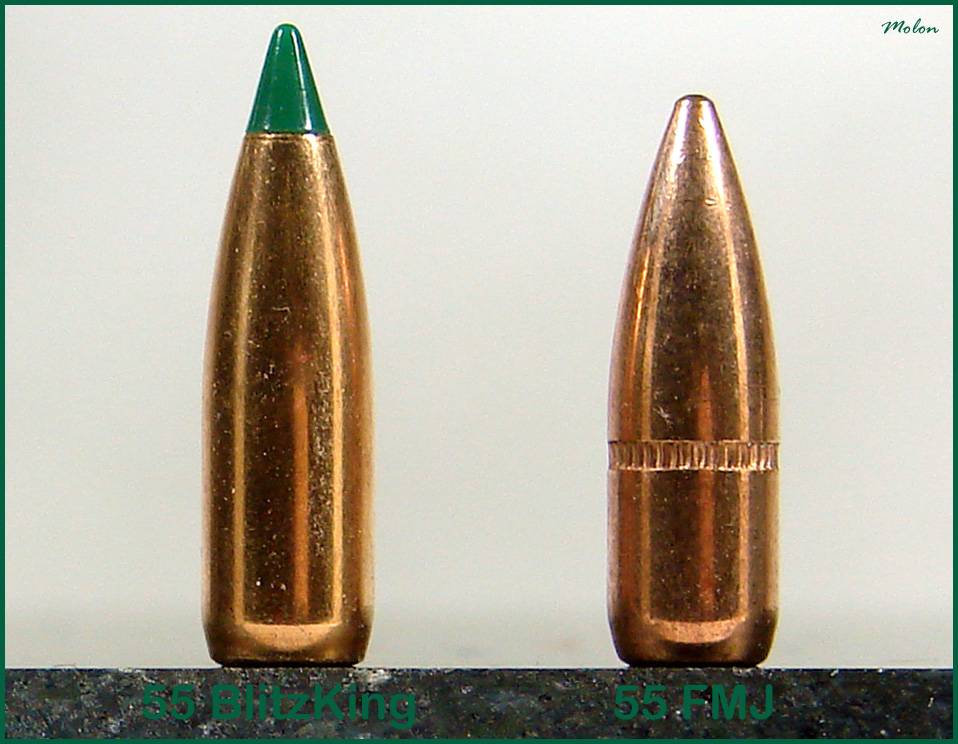
The three, 10-shot groups fired in a row from the Criterion 16” CORE barrel from a distance of 100 yards had the following extreme spreads:
1.15”
1.09”
1.13”
for an average 10-shot group extreme spread of 1.12”. The three, 10-shot groups were over-layed on each other using RSI Shooting Lab to form a 30-shot composite group. The mean radius of the 30-shot composite group was 0.39”.
The smallest 10-shot group . . .
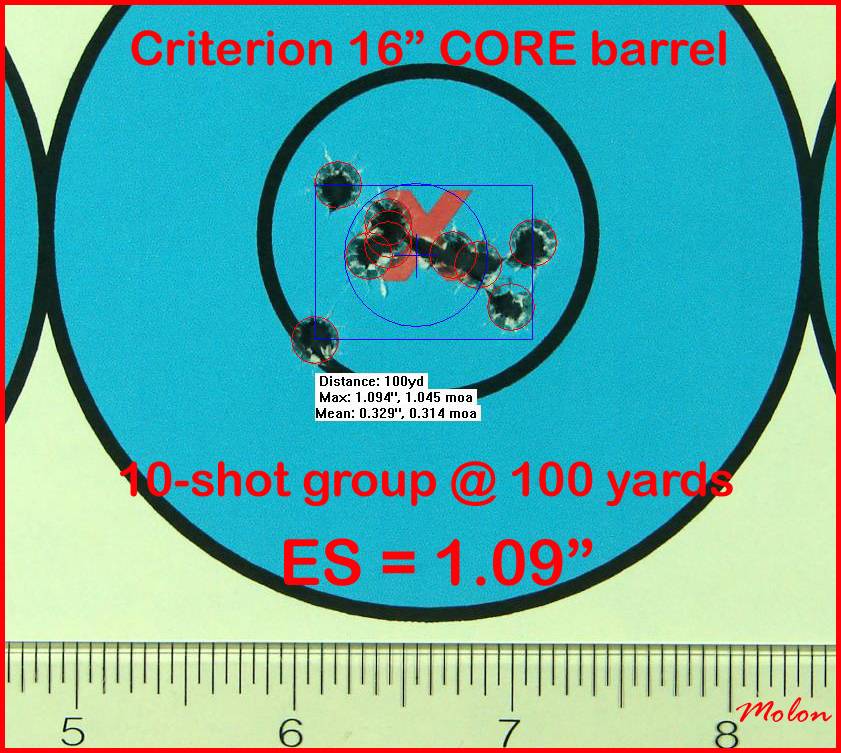
The 30-shot composite group . . .
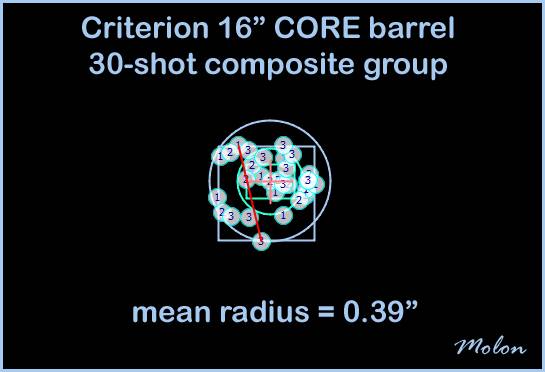


…

Well over a decade ago, the late John Noveske was the impetus for bringing modern AR-15 barrel profiles to the civilian market. His 16" CHF N4 barrel profile has the same weight as a government profile barrel of the same length, but it has a more intelligently designed contour that places more of the weight of the barrel from the chamber to the gas block journal and does away with the M203 cut-outs.

Over the last several years we’ve seen the emergence of barrels produced by multiple manufacturers with the specific objectives of balancing weight distribution, heat absorption and handling characteristics while at the same time endeavoring to improve upon the accuracy/precision of old school barrel profiles of similar weight. Criterion Barrels CORE series of barrels is a prime example of this modern approach to profiles for AR-15 barrels.
The Criterion 16” CORE barrel reviewed for this article has a stripped weight of exactly 1 pound, 12.0 ounces. This is the same weight as a Colt 16” government profile barrel. As with the Noveske CHF N4 barrel, the CORE barrel profile has done away with the useless M203 cutouts. More of the barrel material has been shifted to the aft of the barrel for a “continuous taper” profile. The gas block journal for the CORE barrel is 0.625”.
The 16” CORE barrel . . .

The barrel stamp reads: CRITERION 223 WYLDE 1-8

The date code on this barrel reads: 08/21.

The CORE barrel is button-rifled and the bore is hand-lapped. The bore and chamber are chrome-lined. As pictured above, the barrel has a 223 Wylde chamber, a 1:8” twist and utilizes a mid-length gas system. The gas port diameter gauged at 0.078”.


The gas block journal has a single dimple contralateral to the gas port.

The barrel extension has M4 feed-ramps, although it is not marked as such like a Colt barrel extension.

The crown . . .

I installed the Criterion 16” CORE barrel in a new Colt cage-code M4 upper receiver and free-floated the barrel with a Geissele MK16 rail. A new JP Enterprises EnhancedBolt closed on a 1.4646” headspace gauge and did not close on a 1.4666” headspace gauge.



I conducted an accuracy (technically, precision) evaluation of the Criterion 16” CORE barrel from my bench-rest set-up following my usual protocol. This accuracy evaluation used statistically significant shot-group sizes and every single shot in a fired group was included in the measurements. There was absolutely no use of any group reduction techniques (e.g. fliers, target movement, Butterfly Shots).
The shooting set-up will be described in detail below. As many of the significant variables as was practicable were controlled for. Pictures of shot-groups are posted for documentation.
All shooting was conducted from a concrete bench-rest from a distance of 100 yards (confirmed with a laser rangefinder.) The free-float hand-guard of the rifle rested in a Sinclair Windage Benchrest, while the stock of the rifle rested in a Protektor bunny-ear rear bag. Sighting was accomplished via a Leupold VARI-X III set at 25X magnification and adjusted to be parallax-free at 100 yards. A mirage shade was used. Wind conditions on the shooting range were continuously monitored using a Wind Probe. The set-up was very similar to that pictured below.

The Wind Probe . . .

The accuracy evaluation of this barrel began with factory loaded Federal 77 grain Gold Medal Match ammunition. One of the first groups fired from this barrel had an extreme spread of 0.18”. That group is pictured below.

The very next group fired from this barrel had an extreme spread of 1.5”. That 10-shot group is pictured below.

A 10-shot group with an extreme spread of 1.5” is perfectly acceptable for a 16” chrome-lined AR-15 barrel with a weight of 1 pound, 12 ounces. However, this barrel isn’t broken-in yet. The bore-scope image shown below was taken prior to any shots being fired. It shows the tooling marks on the lands in the leade, which run perpendicular to the direction of bullet travel.

For the barrel to shoot to it’s potential, the sharp edges of these tool marks need to be “burnished” out. So, I continued shooting 10-shot groups using a variety of factory loads and hand-loads.
For comparison, the bore scope view shown below is from the leade of a Colt M4A1 SOCOM barrel that's been fully broken-in.

As the fired round-count for the CORE barrel approached 150, the size of the groups shrank and became more consistent. At this point, I fired the three 10-shot groups “of record” using one of my standard match-grade hand-loads topped with Sierra 55 grain BlitzKings. When fired from my Krieger barreled AR-15s, this load has produced ½ MOA 10-shot groups at 100 yards.


The three, 10-shot groups fired in a row from the Criterion 16” CORE barrel from a distance of 100 yards had the following extreme spreads:
1.15”
1.09”
1.13”
for an average 10-shot group extreme spread of 1.12”. The three, 10-shot groups were over-layed on each other using RSI Shooting Lab to form a 30-shot composite group. The mean radius of the 30-shot composite group was 0.39”.
The smallest 10-shot group . . .

The 30-shot composite group . . .



…
Last edited:



